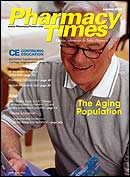Publication
Article
Pharmacy Times
DIABETES WATCH
Driving Unwise with Hypoglycemia
A study of 65 adults with diabetesfound that drivers who have troublegauging when their blood sugar is lowmay operate a car when they should not,according to a study published inDiabetes Care (November 2007).
In the small study, the researchersfound that 21 of 45 adults with type 1 diabeteshad difficulty recognizing that theyhad low blood sugar. Of these patients,43% believed they were able to driveeven when they were experiencing hypoglycemia.The study participants completed2 sessions in a driving simulator, oncewith normal blood sugar levels and oncewith low sugar. Throughout the testing,the patients were asked whether they felthypoglycemic and whether, in daily life,they would drive.
The results of the tests showed that ofthe patients with type 1 diabetes withgood awareness, only 1 participant feltokay to drive when hypoglycemic, comparedwith 9 of 21 with poor awareness.
Diabetics: Take a Walk toLower Heart Risks
A daily walk may help patients with diabetes decreasetheir risk of heart disease, reported researchers in theInternational Journal of Sports Medicine (October 2007).
The study, which included 102 adults with type 2 diabetes,found that those who committed to a daily walkingregimen for 17 months had a lower risk of developingheart disease or experiencing a stroke, compared withpatients who ceased exercising. The participants wereasked to take a 20- to 30-minute walk every day. Of the64 patients who fulfilled the requirement, 2% had a strokeand none developed heart disease during the study duration.Of the 38 participants who did not complete theexercise program, 18% developed heart disease or had astroke.
Death Rate Climbing forBlacks with Diabetes
A Centers for Disease Control and Prevention study found thatblack children with diabetes face a significantly higher death rate,compared with white children. The researchers said that the trendhas been accelerating among children aged 1 to 19.
For the study, the researchers looked at death certificates from1979 to 2004 that indicated that, between 2003 and 2004, diabeteswas the cause of death for 89 children and teens. During that timeperiod, the annual diabetes death rate for black children and teenswas more than 2 times that for white children. The researchersalso found that the mortality rate among blacks has been risingsince 1998, while for whites it decreased drastically from 1979 to1994 and then leveled off from 1994 to 2004. The findings werepublished in the November 16, 2007, issue of Morbidity andMortality Weekly Report.
New Series Targets Teens and Diabetes
The National Diabetes Education Program (NDEP) recentlyintroduced Tips for Teens with Diabetes, a series of tip sheetsand an online quiz specifically created for teens to help themmanage their disease and reduce the risk for complications.
The series topics include What is Diabetes?, Be Active, MakeHealthy Food Choices, Stay at a Healthy Weight, and Dealingwith the Ups and Downs of Diabetes. The NDEP also has a tipsheet addressing the teens at risk for type 2 diabetes, calledLower Your Risk for Type 2 Diabetes. Furthermore, the grouphas created an interactive online quiz for teens with diabetesbased on information found in the tip sheets.
For more information about the NDEP's free resources forchildren and teens, visit www.YourDiabetesInfo.org, or call 888-693-NDEP (888-693-6337).
Instant Messaging Helps Treat Diabetes
Patients with diabetes may be able to manage their diseasebetter with an automated instant-messaging service. For 12weeks, patients who used a Web-based short messaging servicelost weight, had better control of their blood sugar, and hadlower blood sugar before and after meals, according to Koreanresearchers.
The study involved 35 patients with diabetes and 36 patientsin a control group. The patients who used the service recordedtheir diet and the amount of exercise on a Web site and weregiven a device to calculate blood sugar and a pedometer thatlinked with their cell phone and sent data directly to their Webdata sheet. The system sent messages back to the cell phones.
After 12 weeks, the researchers found that patients whoused the service had lost an average of 1.9 kg and had adecrease in their average glycosylated hemoglobin levels from8.06% to 7.34%. The control group saw no change. Their findingswere published in the November 2007 issue of DiabetesCare.
F A S T F A C T : According to data reported by the Centers for Disease Control and Prevention in 2006, 1 in 523 people younger than age 20 has diabetes.







